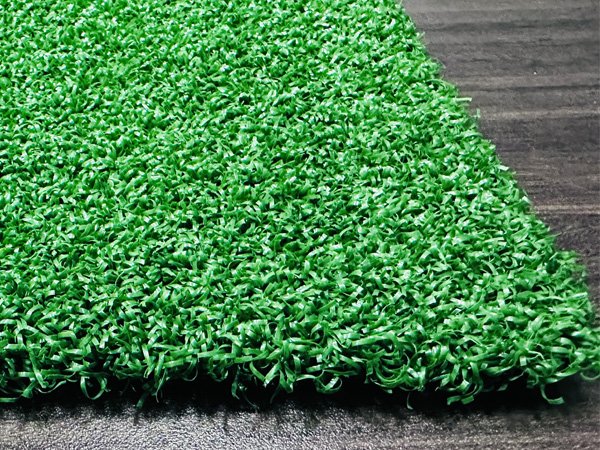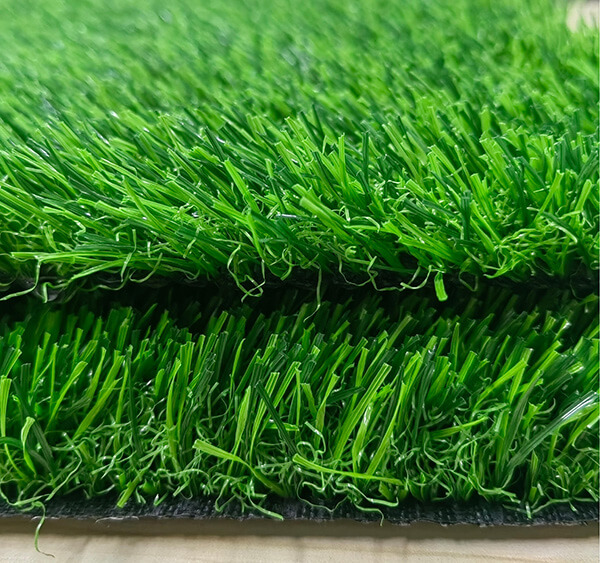
Artificial green grass mat Procurement Guide: How Can B2B Clients Distinguish the True Quality and Lifespan of Landscape Artificial Grass vs. Sports Grass Turf?
This article serves as a comprehensive artificial green grass mat procurement guide specifically designed for B2B clients. We will delve into the core factors that affect the quality and lifespan of artificial green grass mat, from yarn raw materials and backing technology to key parameters like density and pile height. Learn how to distinguish the true quality of landscape artificial grass and sports grass turf like an expert, avoid procurement pitfalls, and make the most informed investment decision for your artificial green grass mat.
For B2B clients such as schools, real estate developers, and sports venue contractors, procuring artificial green grass mat is a significant investment. Faced with a vast array of artificial green grass mat products on the market, cutting through the price confusion to accurately identify true quality and expected lifespan is crucial. This guide provides a systematic, actionable method for evaluation.
![cheap synthetic grass]()
The Source Matters: Yarn Raw Material is the Foundation of Artificial Green Grass Mat Lifespan
The grass yarn is the "lifeline" of artificial green grass mat. Its raw material directly determines the turf's resistance to aging, durability, and environmental friendliness.
PE (Polyethylene): The current mainstream material for high-end artificial green grass mat. It feels soft, has excellent wear resistance, and offers the best resilience. It is widely used in sports grass turf (like football grass, tennis grass) and high-end landscape artificial grass. The quality difference between virgin and recycled PE is substantial.
PP (Polypropylene): Harder to the touch, slightly less wear-resistant, and can fibrillate over time, but is lower in cost. Often used for landscape grass or decorative turf, not suitable for high-intensity sports grass turf.
PA (Nylon, Polyamide): Offers superior performance, extremely strong wear resistance and resilience, but has the highest cost and a stiffer feel. Typically used for high-end golf grass putting greens.
Identification Tips:
1. Burn Test (Sample Testing): Burn a few blades. PE drips like wax with a candle-like smell; PP produces black smoke and a petroleum smell; PA is hard to burn with a smell of burnt feathers. Virgin material leaves uniform residue, while poor-quality recycled material will have impurities and a strong odor.
2. Feel and Look: High-quality PE artificial green grass mat yarn is smooth, uniformly colored, and flexible. It should snap back quickly after being pulled. Inferior yarn appears dull, prone to burrs, and recovers slowly.
The Structural Soul: The Backing System is Core to Artificial Green Grass Mat Stability
The backing acts like the "foundation" of the artificial green grass mat, locking each tuft in place to prevent grass blades from pulling out during use.
SBR Latex: A traditional, mainstream choice offering good cost-effectiveness and stable performance. However, it is less environmentally friendly and can become brittle in extreme cold.
PU Backing (Polyurethane): The choice for high-end artificial green grass mat. It provides stronger adhesion, is non-toxic and environmentally friendly, and offers excellent weather resistance. It gives the turf better integrity and a longer lifespan, especially suitable for professional sports grass turf and golf grass.
Identification Tips:
1. Bend Test: Take a sample and repeatedly bend the backing. High-quality backing is flexible and won't crack easily. Poor-quality backing will show white crease marks or even break after a few bends.
2. Pull Test: Try to pull a tuft of grass from the back. With high-quality backing, this is nearly impossible; the blade will break at the root rather than pull out. Inferior backing allows easy pull-out.
![KDK artificial grass]()
The Key Parameters: A Scientific Look at Density, Pile Height, and Dtex
These parameters are the "medical report" for artificial green grass mat and must be considered together, not by focusing on a single value.
Density (Stitches/M⊃2;): The number of tufts per square meter. Higher density results in a fuller, more luxurious feel and longer lifespan. However, high density must match pile height, or the grass may mat down easily.
Pile Height (Millimeters): The height of the grass blades. Landscape artificial grass is typically taller (25-40mm) for a soft, lush feel; football grass is medium (40-60mm) to balance ball speed and player cushioning; golf grass requires very short pile (10-20mm) to mimic a real green.
Dtex: A measure of the thickness/heaviness of the yarn. A higher Dtex value indicates a thicker, sturdier blade that resists matting and has better uprightness. High-intensity sports grass often uses high-Dtex yarn.
Identification Tips:
1. The "Weight" Rule: For turfs with similar pile height and density, the heavier one usually indicates higher Dtex yarn or a heavier backing, signaling better quality.
2. Check the Backing: Turn the artificial green grass mat over. Check if the backing weave is tight and the tufting stitches are even. High-quality turf has neat backing, evenly applied adhesive that does not bleed through to the surface.
Application Differences: Specialized Standards for Landscape, Sports, and Golf Grass
Different types of artificial green grass mat have distinct performance priorities.
Landscape Artificial Grass: The focus is on aesthetics, environmental safety, and weather resistance. Key concerns are UV resistance (color retention), being non-toxic (especially for kindergartens), drainage performance, and ease of cleaning.
Sports Grass Turf (e.g., Football Grass): The focus is on sports performance and safety. It should meet relevant international standards (like FIFA Quality Pro/Star), concerning ball roll speed, bounce, shock absorption (player protection), and slip resistance.
Golf Grass: The focus is on replicating a true putting experience. It demands extreme evenness, consistent ball speed (Stimpmeter reading), and true ball roll.
Look Beyond the Sample: Key Questions to Ask Your Supplier
Don't base your decision solely on samples. Engage in deep communication:
1. Warranty Period: Reputable artificial green grass mat manufacturers offer warranties of 5-8 years, a direct promise of product longevity.
2. Case Studies: Request successful project cases similar to yours, preferably with options for site visits or detailed videos.
3. Test Reports: Ask for test reports from authoritative third-party labs covering UV resistance, heavy metal content, physical properties, etc.
Conclusion: Comprehensive Evaluation, Choosing a Reliable Partner
Distinguishing the quality and lifespan of artificial green grass mat is a systematic process requiring examination from multiple dimensions: raw materials, craftsmanship, parameters, and application. The wisest strategy is to select a technically proficient, fully certified, and reputable artificial green grass mat manufacturer as a long-term partner.
As a professional artificial green grass mat manufacturer, we provide full-range solutions for landscape grass, sports grass turf, and golf grass. We encourage you to request free samples for comparison and provide detailed technical parameters and project case studies. Contact us today for personalized procurement and technical consultation to choose high-quality artificial green grass mat that stands the test of time for your project.


























